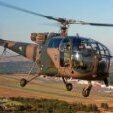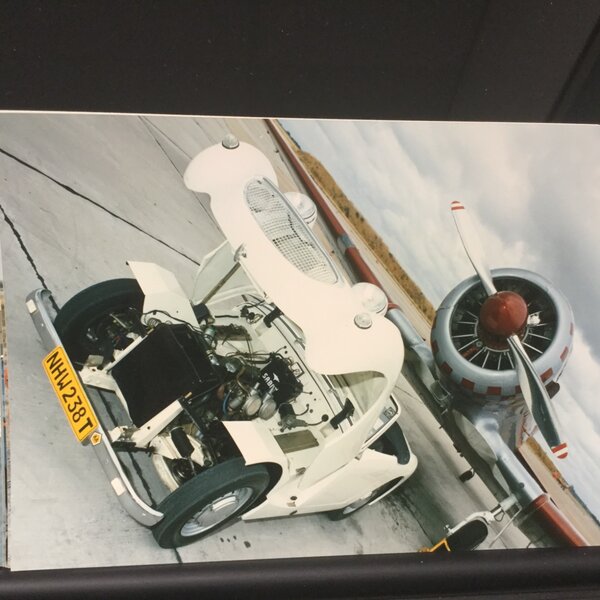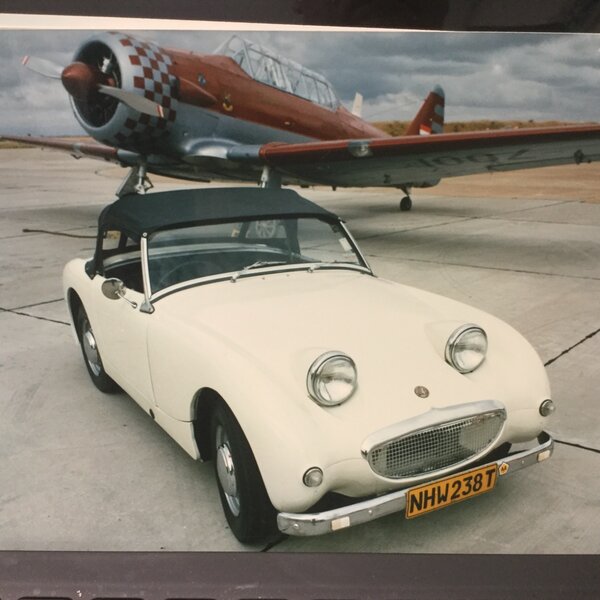-
Posts
459 -
Joined
-
Last visited
-
Days Won
17
Content Type
Profiles
Forums
Gallery
Downloads
Blogs
Events
Store
Aircraft
Resources
Tutorials
Articles
Classifieds
Movies
Books
Community Map
Quizzes
Videos Directory
Everything posted by F10
-
Yes, social. Apologies for rant, had just watched the news, frame of mind was uncaged.
-
Whatever you prefer! In a stroke of genius….I didn’t mention the date. 🤓 Scheduled for 31 Oct, so this coming Sunday.
-
For those in the area, FYI. Yarram FC will be doing a fly away for a BBQ lunch at Bairnsdale with GFC. Meeting and chat at 11:00, lunch at 12:00 AEST. Wx is looking promising. Marxist Dan has relaxed his draconian world record lockdown and he hasn’t yet forced through the non sitting parliament his North Korean total control of calling lockdowns and curfews. So let’s make hay…A few months ago, we hosted them at Yarram. It was a fun day, chats to mates and some nice eye candy (aircraft I mean!) to look at. Hopefully this will be the same!
-
If old mate Snow has anything to do with it, you can bet it will be $$$$$$$$….
-
Yes I’ve always thought this Cessna type to be a very effective yet simple stall warning. Paul’s UTube clip was interesting. One of the big dangers to the base leg stall is the fact that the stall symptoms are masked by the fact you are descending, so the wing loading is reduced. With reduced wing loading, stall speed is lower. for example, If you fly a bunt type manoeuvre, you can fly the aircraft, under control at well below the basic stall speed. Just don’t pull back and load the wings, it will seem to stall immediately. So in the descending base turn, with low wing loading, you will feel no buffet, indeed, flaps may have altered downwash so root stall buffet now misses the tail plane. You will not see a high nose attitude, controls will feel sloppy, but at base and final approach speeds, the do anyway. So, it all looks ok….but just apply a bit of back pressure (wing loading) to tighten that base turn, to avoid flying through centreline…and all hell breaks loose! If you do stall, “go for the ground”, on recovery, what I mean is, give the aircraft a chance to recover. Being too enthusiastic to get that nose up and getting into a secondary stall….and you are in deep trouble.
-
Very nice. The new 170D looks like a nice machine. Jabiru 170 and 230 models are hard to beat for overall bang for your buck.
-
Oooh, pain! Really got to throw some moth balls around the hangar! 🙃 Wow, guess that decision to re-bag has become a lot easier on. Seriously, my sympathies, worst luck. Hope insurance will help.
-
Nice Stefan, KFA make a nice aircraft! I’ve got into the recreation or sport flying a bit late, better late than never! I spent 23 years in the SAAF. Because I was flying professionally, I guess going flying on weekends too, was not a big priority! However, now I fly for fun….on weekends! I bought a Skyfox Gazelle, in partnership with a good mate, also originally from SA, he manages a leaf veggie farm nearby, 1000 acres under irrigation. The Skyfox and Skyfox Gazelles (tri gear version) were built here in Australia and were a very similar design to KFA products. Sadly, it didn’t last. They were safe, and easy machines to fly. Watching U Tube, it seems you guys are going well! Have attached pic of our Gazelle.
-
An old post I know, but any news on how it’s been going? I’ve actually always liked the look of the Supercat, as I’ve always liked the utility and WW2 fighter type look of Ag aircraft. Yes short coupled, but one thing I think could be a problem, is the large upright canopy, disrupting airflow over the vertical fin, indeed almost blanking it off! The fact you have an open cockpit, is interesting because it has probably improved airflow over the tail? I remember reading about a Fisher Flying Products FP303, a very nice looking 3 axis micro lite, to which a builder had fitted a large enclosed canopy, over the normally open cockpit. This caused buffeting on the rudder in flight as I recall.
-
Apart from the electric one, interesting yes, but the traditionally powered Aerolite 103 seems a very nice ultralite to me. I really like the yoke control wheel and the proportions of the aircraft look good. Do I understand correctly that you could import and build a kit here in Aus, it seems the electric motor one could be problematic? As far as Methusala’s comments are concerned, I do think politics should be avoided on the forum…but. As he seems to have assumed we all think like he does, let me just say to describe the Gillard Rudd bloodbath and total fiasco government as a “functioning government” is like claiming my Skyfox has a cruise speed of 180 Kts. As to the planet is about to collapse, I guess proved beyond doubt, by the “fact” the Northern Polar ice cap “totally disappeared by 2008”, as promised by Al “Bore” and “Flatulence” who claimed about two years ago, our dams and rivers will never be full again nor will soil moisture content ever recover. Two name but just two examples of “fact” (many more out there), very good reasons no doubt to destroy manufacturing industry in Australia along with the economy and solve all our insomnia problems as we will all be asleep by 1900, when it gets dark. Be that as it may, I would love to buy a 103, I think it would be a blast to fly on a lovely cool summer afternoon!
-
No…but use some other ones!😸 Here are some pics some may find interesting. The classic little Austin Healy “Frogeye” Sprite Mk1 and the Harvard. This Harvard was interesting because as they were approaching retirement, the techs built this aircraft up out of the stock of spares, of which Logistics Command had a lot. Spare mainplanes, centre section, etc, so essentially this was like a brand new Harvard. It was Painted up in a non standard racy colour scheme by the techos. It now flies with the SAAF Museum historic flight. It’s called “Inkwazi”, the African name for an African Fish Eagle, the raptor that the SAAF eagle symbol, or badge, depicts. Pics taken by the base photographer, Patrick Vermaak, who also often took photos for a motoring magazine.
-
An interesting fact is, during the Second World War, probably due to shortages of strategic materials, aluminium alloy in this case, most British fighters had wooden propellers. The bombers tended to have metal ones, maybe due to the blade size, but Hurricanes and Spitfires, in fact all models of Spitfire, had wooden prop blades. An early composite you could say. Because yes, they had brass leading edge abrasion strips. I think the Typhoon and Tempests also had metal blades. But interesting. Maybe it was also a contract thing with prop manufactures?
-
Yes I mentioned at one stage Mooneys having this 90 deg bend to the prop tips. I think it was a “winglet” concept, to reduce the prop tip vortices. This would reduce rotational drag and noise. But yes, they didn’t seem popular, I agree, this will put a lot of centrifugal stress on the tip area. Also agree with Ol Emu about age old centripetal/centrifugal force debate. To me what you are feeling is the change of direction. Your body wants to keep going straight, as per Newton 1, centripetal force is forcing it to turn and you feel the opposite and equal reaction, Newton 3.
-
I agree with Nev, some basics never change, glider wings, short span fighter type wings. You will get some interesting variables. Swept or crescent prop blades and tips I understand, are mostly to reduce tip vortices and shockwave formation at the tip area. Sweeping the leading edge back, creates a series of weak spanwise shockwaves ahead of the leading edge, which slow the airflow down ahead of the wing or blade, so at very high Mach number speeds, the wing will behave like a in subsonic airflow, this means aerofoil shapes good for subsonic flight, will still perform very well at high speed. Bearing in mind, the dilemma designers have, is Supersonic aerofoils do not fly well at all, at low speeds but you need to fly slow to land! very close to Mach 1, when normally, shockwaves would be shock stalling the wing. Considering, as Mach numbers get up to around M .8, initially a “normal” or 90 deg shock wave will form, behind this shockwave, boundary layer airflow separates from the wing surface, in effect stalling the wing behind the shock and leading to high drag. This is why the Handley Page Victor bomber had a crescent wing, so airflow slowed through the shockwaves on the outer wing section. So I think as prop tips start compressing, shock waves form, which stalls the tip, leads to high drag at the tip and creates a lot of noise, so holding off shock wave formation is important. Prop design will be making the root area strong enough to handle blade and centrifugal loads, twist and spanwise taper, will make sure lift is equally generated along the blade span. Rounded tips will reduce tip vortices and drag. Remember some Mooneys had 90 deg Winglets on their prop tips? They didn’t seem to last long…Prop blade length will be a clearance and strength compromise. The only reason the F4 Corsair had gull or cranked wings, was so the biggest possible propeller could be used without very long gear legs. To me that’s the key, a lot of prop blade shape will be a compromise, to get the best performance possible, within constraints of engine power, prop clearance and rotational speed (Mach. number), Prop mass. As airspeed increases, reducing blade angle of attack.That’s why coarse pitch works well at high or cruise speeds. Taking off in coarse pitch, results in high angle of attack on the blade, due the low forward speed. leading to a stalling of the blade in the blade root area, only the outer span of the blade will be installed. Thrust is lost and the aircraft accelerates very slowly. Watch movie clips of the Supermarine S6 seaplane taking off….it took forever! Simple force vector diagram below shows speed change on angle of attack of blade. That’s why a fixed pitch prop is so restrictive. But cheap!
-

Another stall spin crash (usa)
F10 replied to Thruster88's topic in Aircraft Incidents and Accidents
Seems strange the engine condition at 1200 odd hours. Broken rings, damaged valves, detonation, as a result of running it too lean will cause that. Pitting of the tappets probably from metal debris from earlier damage due detonation. EGT gauges are a good thing to have! I remember flying an aircraft with one, had a injected 200 Hp Continental, can’t recall the serial. EGT was super sensitive, a whisper of change on the mixture showed. I tell you now, laugh if you will, below 500ft AGL, I will not turn back, even in the Gazelle. If close to 500, 30 deg either side. You need to concentrate on landing, not load yourself up with trying a turn back. Nor get caught out turning downwind. When you are in danger and in our case, your pride and joy is heading for a damaging…without even realising it…you will instinctively ease back on that stick…Dan Gryder had a good suggestion, stick a 2mm wide strip of red pin striping on your ASI glass, at 5 Kts above your stall speed. It’s a strong visual cue/wake up call, when your getting slow, because your ASI needle goes behind it….somehow that shocks you a bit into reality. -
Some interesting points! The Brits seemed to stick stubbornly to tail wheels, the Lancaster, Halifax, all their fighter types etc, even up to the early 1950s Shackleton models. The jets changed this, Frank Whittles experimental, Meteor and Vamp, but mainly forced on them due the jet pipe position. The Yanks seemed pretty open to nose gears, way back late 30s, the Havoc or Boston, P38, P39 Aircobra, B24 Lib, PBY, many more. As for flipping over, I would have to say a nose wheel would be more resistant, if it didn’t collapse. A far bigger problem is flipping over in a low wing and being trapped by the canopy! Many of today’s sport aircraft have lovely big canopies…but upside down…not so nice! Especially when accompanied by the attention getting sound of sizzling fuel drops. I will always be a fan of a rearward sliding canopy…these warbird pilots who take off with closed canopies….crazy in my book. Try breaking your way out an upside down Hurricane, Harvard, P40 (birdcage canopies) or a canopy about 5mm thick….no way Jose. The bubbletop Spitfire has a heavy canopy, works on a winding handle on RHS of cockpit wall, which can’t lock back…it will slam forward on a forced lob. Trick here was to pop the cockpit door open a tad. The door locks have these sort of double slotted ends, allowing the cockpit door to be locked slightly open. This puts a step in the canopy rail, locking it open. Even the standard sliding canopies didn’t lock in the open position. Strange!
-
The Tri gear Skyfox Gazelle. An affordable and honest machine. Has no vices and benign in the stall. Conventional controls, with a center stick and toe brakes. The Gazelle the Junkers style ailerons, effective at low speeds. Not a tourer, due to cruise speed and load capability, but great for a swing around the sky on a clear golden afternoon. Easy to maintain and cheap to operate. Second hand ones in good condition are very affordable. Would also be a cheap aircraft to re-build to new condition.
-
Not surprised, when you see how nose up attitude is restricted by the tail wheel!
-
Yes…I know this is an old post….but I was really interested to see this title, nose or tail wheel, didn’t seem to raise pages of heated debate! I’ve been watching these crazy STOL guys on UTube, and it’s been interesting because the tri gear Zeniths, seem to have some advantages. The Raul wheel guys on take off, have this drama of flying the tail, before brakes release, then the seem restricted by the tail wheel, when rotating, often slamming the tail wheeling the ground. The Zenith just sits there at full power, and then the pilot can rotate to a high angle of attack, unrestricted by the tail wheel. With landing, again, both aircraft configs land on the mains but the Zenith can climb on his brakes, without nosing over. I would have always gone with a tail wheel for bush flying, but now, I really would consider a nose wheel. Taildraggers are very traditional and look good. But I’ve had my time of zig zag taxi and the added handling issues. More than happy with my nose wheel thanks!
-
Wow, what in the water in the Czech Republic? They seem to be responsible for most of the great designs in Sport Aviation. Just recently in a magazine I read about a great new model, can’t recall the name of it right now. Impressive!
-
Escotthendry, that Legend 600 looks very nice, very Cessna look about it. Who makes that? Rotax engine? Very nice!
-
Don't apologize! I should have stated that, but as I said, the other aircraft look great!
-
Bernie, wow! Nice looking Fox! It looks in fantastic condition. You do know it will tow much better with the wings folded....Haha, I see you have the turtle deck removed so unfolded for the pic. I see you list as a non pilot, are you going to learn on the Skyfox? If so good idea, its an easy and friendly aircraft to fly and fully conventional, center stick and toe brakes. Good choice!
-
In my SAAF career, I knew of two Impalas that had in flight fires. Both caused by a faulty gasket in a fuel control unit (the BFCU), causing a severe fuel leak. Fuel pools below the engine, then she barks like a dog…whoof! The trouble is the elevators and rudder of the Machii, are controlled by aluminium torque tubes or push rods, that run through to the tail under the engine, right where the fire is. One pilot landed seconds away from the rods melting, the other said shortly after a night flying take off, he saw the fire and overheat warning lights come on, then shortly after, he felt the stick “go dead in his hands” and he ejected.














